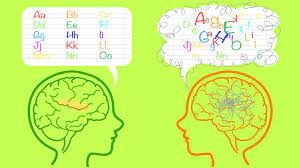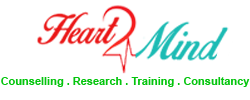by Rashi Kharkwal
Learning disabilities are neurological disorders that affect the brain’s ability to receive, process, store, and respond to information. These conditions can significantly impact a person’s ability to learn, communicate, and perform certain tasks. Despite the challenges they pose, individuals with learning disabilities can excel with the right support and strategies. In this blog, we will delve into the world of learning disabilities, exploring their types, challenges, and effective strategies for managing and thriving with them.
Types of Learning Disabilities
There are several types of learning disabilities, each affecting specific areas of cognitive functioning:

Dyslexia: Dyslexia primarily affects reading skills. People with dyslexia may struggle with letter and word recognition, reading comprehension, and spelling. Dyslexia signs include difficulty in letter-sound correlation, reading fluency, spelling, and decoding words. Confusion between letters and reversing letter order are common. Challenges in reading comprehension and writing are evident. Early identification and tailored support are crucial for managing dyslexia’s impact on learning and development.

Dysgraphia: Dysgraphia is related to writing difficulties. Individuals with dysgraphia might have trouble with handwriting, spelling, and organizing thoughts on paper. Dysgraphia symptoms encompass poor handwriting, both in speed and legibility. Individuals may struggle with fine motor skills, spacing, and organizing thoughts on paper. Written expression might not reflect their verbal abilities. Early intervention and adaptive tools can aid those with dysgraphia in academic and everyday tasks.

Dyscalculia: Dyscalculia impacts mathematical abilities. Individuals with dyscalculia may struggle with understanding numbers, performing calculations, and grasping mathematical concepts. Dyscalculia symptoms include struggles with numbers, math concepts, and calculations. Difficulty understanding quantity, sequencing, telling time, and recognizing patterns are common. Challenges persist despite teaching efforts, impacting math-related tasks. Early identification and targeted interventions can help individuals with dyscalculia develop mathematics skills and confidence.

Attention-Deficit/Hyperactivity Disorder (ADHD): While ADHD is not exclusively a learning disability, it can significantly affect one’s ability to focus, concentrate, and manage time effectively, thus influencing learning and academic performance. ADHD signs encompass inattention, hyperactivity, and impulsivity. Individuals may struggle with focus, forgetfulness, frequent mistakes, restlessness, excessive talking, and difficulty waiting their turn. Symptoms disrupt daily tasks and relationships. Diagnosis involves persistent patterns of these behaviours and requires tailored interventions, including therapy and possibly medication.
Challenges Faced by Individuals with Learning Disabilities
Learning disabilities present a range of challenges that can impact various aspects of life:
Academic Struggles: Learning disabilities often lead to difficulties in school. Reading, writing, and math-related tasks can be particularly challenging, leading to frustration and a negative impact on self-esteem.
Social and Emotional Impact: Children and adults with learning disabilities may experience social isolation and reduced self-confidence due to their struggles in academic and everyday activities.
Employment Challenges: Individuals with learning disabilities might face obstacles in finding and retaining jobs that match their skills and abilities. This can lead to financial instability and feelings of inadequacy.
Strategies for Success
Early Detection and Intervention: Early identification of learning disabilities is crucial. Timely interventions, such as specialized tutoring and therapies, can help individuals build essential skills and prevent academic gaps.
Individualized Education Plans (IEPs): Schools can create IEPs that outline tailored strategies and accommodations to support students with learning disabilities. These plans might include extended time for tests, use of assistive technology, or modifications to assignments.
Multi-Sensory Learning: Engaging multiple senses (visual, auditory, kinesthetic) while teaching can enhance learning for individuals with learning disabilities. This approach can make concepts more accessible and memorable.
Assistive Technology: A wide range of assistive technologies, such as text-to-speech software, speech recognition tools, and electronic organizers, can help individuals overcome specific challenges related to reading, writing, and organization.
Positive Reinforcement: Encouragement and recognition of small achievements can boost the self-esteem and motivation of individuals with learning disabilities.
Strength-Based Approach: Identifying and nurturing strengths and talents can empower individuals with learning disabilities to focus on their abilities rather than their limitations.
Emotional Support: Providing emotional support and a safe space to express frustrations and challenges can significantly impact an individual’s overall well-being.
Conclusion
Learning disabilities may present significant challenges, but they do not define a person’s potential for success. With the right strategies, support, and a positive mindset, individuals with learning disabilities can overcome obstacles and thrive academically, professionally, and personally. Raising awareness about learning disabilities and fostering inclusive environments is essential for creating a world where everyone has the opportunity to reach their full potential, regardless of their cognitive differences.


